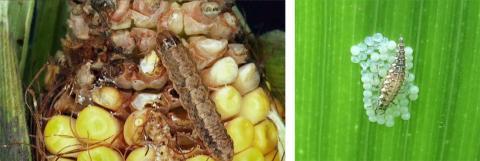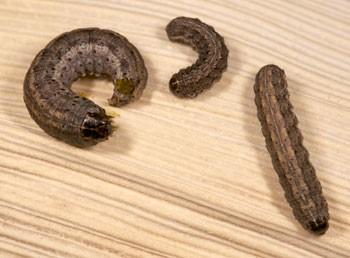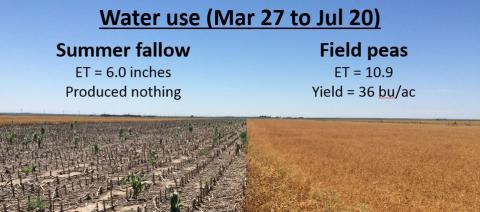Using Degree-Day Models to Predict Western Bean Cutworm Flights
June 15, 2017
Learn how degree-days are calculated and used to predict insect development and specifically, what they indicate for the timing of western bean cutworm development in Nebraska this year.
Scouting Advised for Alfalfa and Clover Leaf Weevils
April 20, 2017
Alfalfa weevils have been reported damaging alfalfa in north central Kansas and western Nebraska. As temperatures warm up, expect to see alfalfa weevil larvae in southern Nebraska and slightly later, in northern Nebraska. Even with the pressure of planting row crops, it is essential that producers growing high quality alfalfa hay make time to monitor fields for weevils now and over the next few weeks. See the article for a table of treatment thresholds for various alfalfa prices.
Ecological Pest Management and Beneficial Insects Topics of April 14, 15 Programs
April 6, 2017
Jonathan Lundgren will be the keynote speaker for the Ecologically Based Pest and Disease Management program April 14 at North Platte. It will be held from 10 a.m. to noon at the West Central Research and Extension Center, 402 W. State Farm Road.
Which Bt Traits Do You Need to Purchase?
March 24, 2017
When it comes to buying corn seed, one way to save money can be to ensure that you don't invest in GMO insect protection traits that you do not need for your particular farm or field. Which corn rootworm, western bean cutworm, or European corn borer traits do you need? This article can help you determine which of the nine types of Bt proteins might best serve your needs.
Cutworm Scouting Urged in Western Nebraska Wheat and Alfalfa
March 23, 2017
Army cutworms are beginning to show up from central Kansas to Chappell. As wheat breaks dormancy, scouting for cutworms is advised from now through April to determine whether treatment is warranted.
Field Pea Seeding Rates, Seeding Depth, and Inoculant
March 13, 2017
Grain-type field peas are a cool season grain crop grown as an alternative for no-till summer fallow in a semiarid cereal-based cropping systems such as wheat-corn-fallow and/or wheat-fallow. They are typically planted in mid-March and harvested late-July. This article reports on research conducted on seeding practices and offers recommendations for producers on the economically optimal seeding rate, seeding depth, and inoculant to grow field peas in western Nebraska.
Field Pea Production: Rotational Costs and Benefits
March 10, 2017
Research findings show benefits in soil nutrient cycling, water infiltration, and microbial activity from replacing fallow with grain-type field peas in a wheat-fallow rotation in western Nebraska.
Considering Non-Bt Traited Corn in 2017? Plan for More Scouting
February 8, 2017
If you're considering planting non-Bt corn this year, entomologists urge you to plan for the additional pest management practices (and associated costs) you may need to adopt, given this decision.








